Homeowner’s Guide To Path Lighting
Updated: Jun. 20, 2022
Unlike other landscape lights, path lights have a singular purpose: to light the path. Here's a rundown of the solar and low-voltage options.
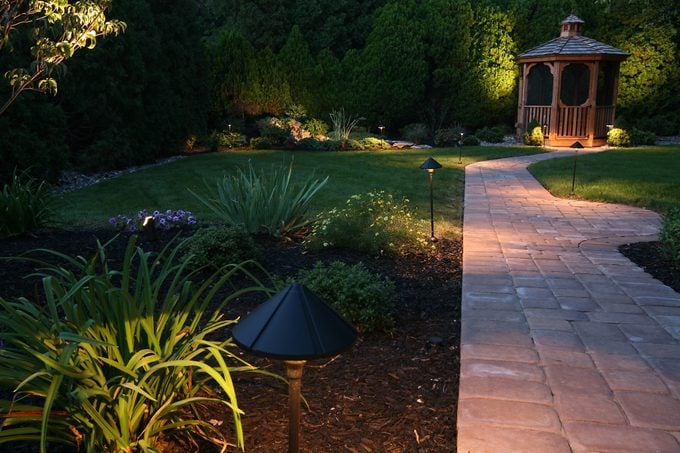
Our part of California is wildfire country, so it’s surprising and even upsetting for some people to see flickering flames lining the walkway to our front door. They’re LED solar lights, of course, but look so realistic it’s easy to be fooled.
Best of all, they’re super bright and stay that way even as dawn approaches. They’ve faithfully flickered every night for the last three years.
Bright path fixtures work well in a sparse and spacious landscape such as ours, but wouldn’t be appropriate everywhere. A more lush setting with water to spare would benefit from more muted, atmospheric landscape lighting that doesn’t attract insects. And focused lighting would better guide people on pathways more well-defined than ours.
There are plenty of options for path lighting, and the best choice for you depends on setting, climate and installation.
On This Page
Choosing Path Lighting
You basically have two options — solar and low-voltage — with both featuring light emitting diodes (LEDs). Outdoor halogen lights used to be a thing, but they are more energy-intensive than LEDs and don’t last as long.
When choosing path lights, consider these factors:
- Built-in vs. freestanding: Path lights can be planted into the ground along the path or built into structures such as walls, posts or steps.
- Solar vs. low-voltage: Solar lighting fixtures are a snap to deploy — just poke them into the ground in a suitable sunny location and wait for the sun to go down. Low-voltage lighting is more reliable, and installation involves running underground wires and plugging a transformer into an available GFCI outlet. Operating a three-watt low voltage light for 10 hours every night consumes about 10 kilowatt-hours (kWh) annually, or about $5 per year or less depending on where you live. That compares favorably with the cost of replacing a fixture’s solar battery, which you might have to do every two to three years.
- Focused vs. ambient: Path lighting should generally be close to the ground (no more than two feet high). You can choose fixtures that focus light solely on the path or the area around the path as well. Ambient lighting looks best with features along the path you want to highlight, like plants or rocks.
- Cost: Budget solar lighting can be cheap, but cheap fixtures are usually unreliable. A quality solar or low-voltage setup for an average-size path will cost between $200 and $700.
Types of Path Lighting
A vast array of path lighting styles and options are available, in five general categories:
Garden lights
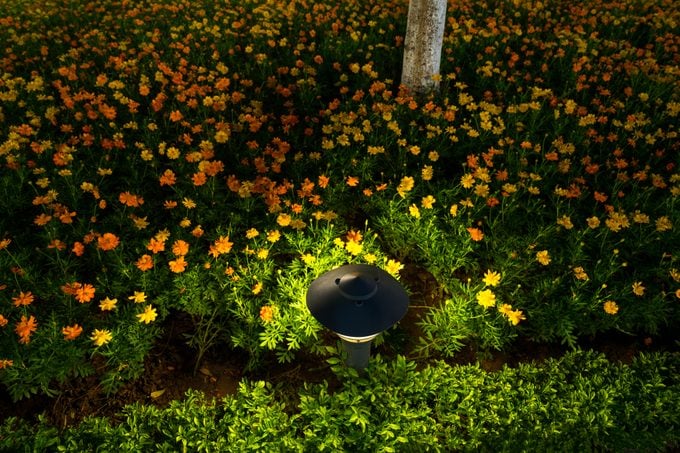
Garden lights emit light in all directions, but have canopies that keep the bulbs hidden. This type of fixture highlights the foliage lining a pathway as well as illuminating the path itself.
Down lights
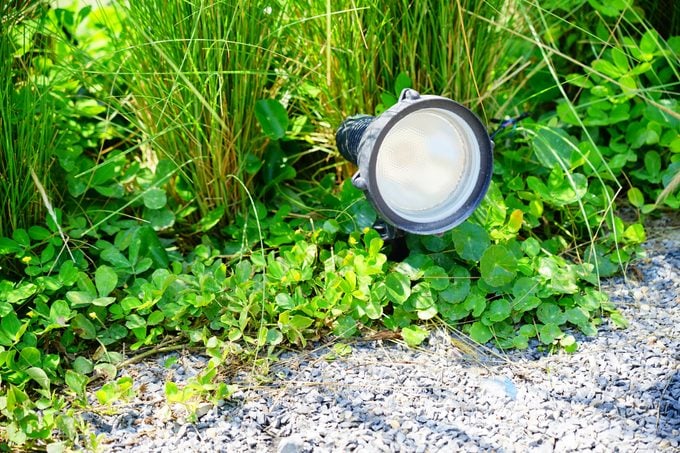
These are like mini-spotlights focusing directly on the path. These should be spaced with care to prevent the path from resembling a runway. When done right, they provide precision accent lighting.
Bollard lights
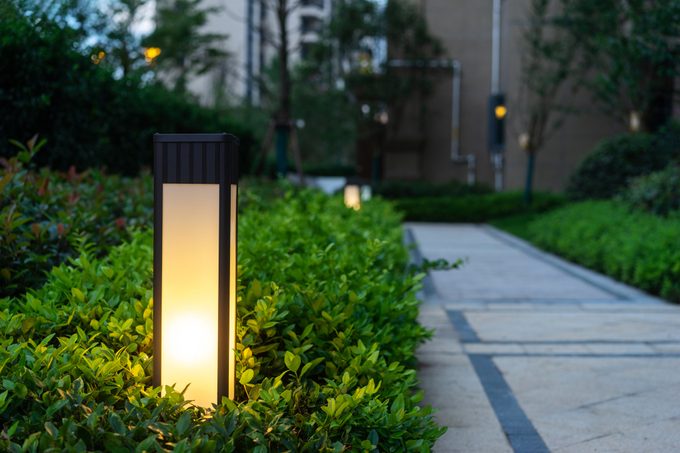
Shaped like pillars and emitting light in all directions, bollard lights illuminate surrounding landscape features as well as the path. Like down lights, these need wide spacing to avoid over-illumination. They’re great for wide paths and open spaces.
Flush lights
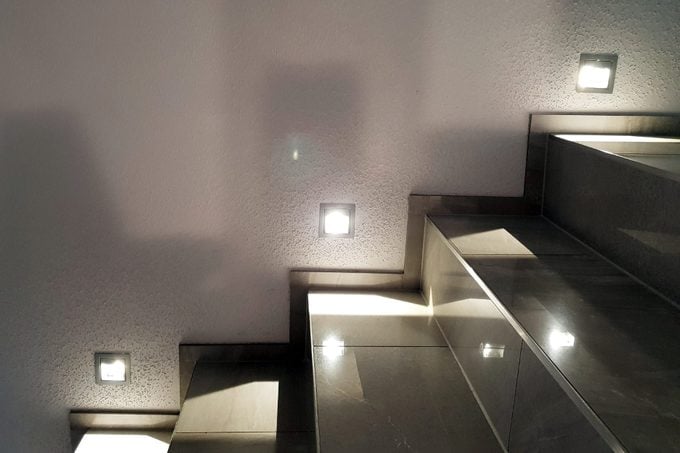
Mounted in the path itself or in an adjoining wall or hardscape feature, flush lights are the most subtle. They typically must be installed during construction of the path or hardscape feature. Step lights are examples of flush lights.
String lights
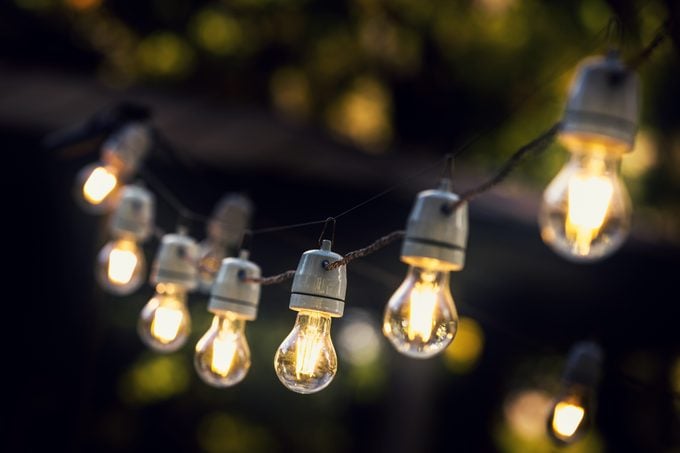
Some people call these fairy lights. Use string lights to line pathways for better visibility or to provide a festive or ethereal atmosphere. They’re good for temporary lighting because they’re easy to set up and take down. They usually plug into an outlet and run on 120-volt power.
Path Lighting Installation Tips
Nothing could be easier than installing a solar path light. Basically, you pull the plastic tab off the battery and poke the fixture into the ground.
It’s good to keep the following in mind, however, to be sure you get the illumination you need:
- Don’t expect solar lights to be as bright as 12-volt lights. Some are, but most are considerably dimmer and tend to fade as the night wears on.
- Place them carefully to ensure they’ll get enough sun (about eight hours) during the day to fully charge. If you need a light in a shady spot, consider installing one with a detached solar panel connected by a wire. You can put the panel in the sun and the light where you need it.
- Consider building your own structures and placing solar lights on top of or inside them.
Low-voltage lighting is slightly more complicated to install. These lights take power from a pair of wires connected to a transformer, which is plugged into a GFCI outlet. Each fixture has wires that connect to the main wires.
Keep these tips in mind for low-voltage path lights:
- The wires are listed for underground use, and you should bury them at least six inches to keep them safe from garden tools. Bury them after you’re done with any planting to avoid cutting them with your shovel. Six inches is shallow, so no need to call 811 before you dig.
- Don’t use the quick connectors that come with the low-voltage lights. Outdoor wire connectors are what the pros use; they’re safer and last longer underground.
- Avoid spacing lights in a straight line or putting them too close together. Too much illumination destroys the ambiance. Depending on the lights, they should be at least six to 10 feet apart. (This also applies to solar lights.)
Best Path Lights to Buy
When you need path lights, you almost always need more than one, so many of the best buys are sets. It’s fine to mix and match fixtures from different sets, even if they are low-voltage fixtures, But sticking to a single style lends cohesion to your landscape.
Here are three popular sets:
Best Solar Path Lights
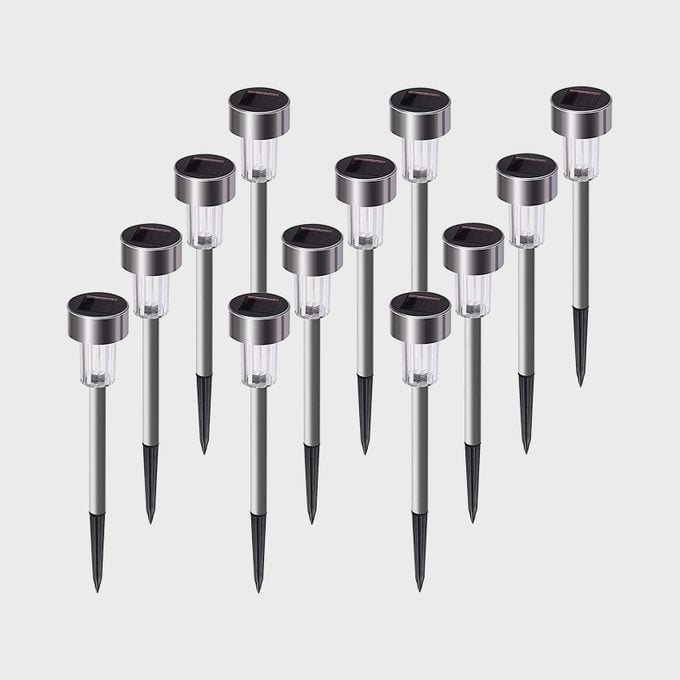
Sunnest Outdoor Solar Lights come in sets of 12 for around $20 and are one of the most popular solar landscape light offerings on Amazon. They are canopy lights and can be used in other parts of the garden.
Best Low-Voltage Path Lights
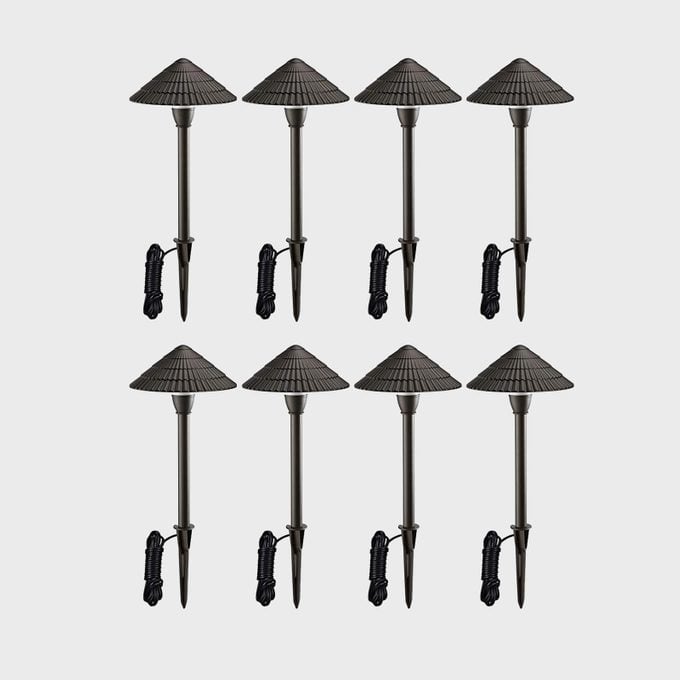
Each unit in a 12-pack set of Leonite Low-Voltage Pathway Lights consumes less than three watts of electricity while providing the illumination of a 30-watt incandescent bulb. The set comes with wires and wire connectors, but the transformer isn’t included. If you’re replacing an old set of low-voltage lights, use the transformer from that set.
Best Torchlights
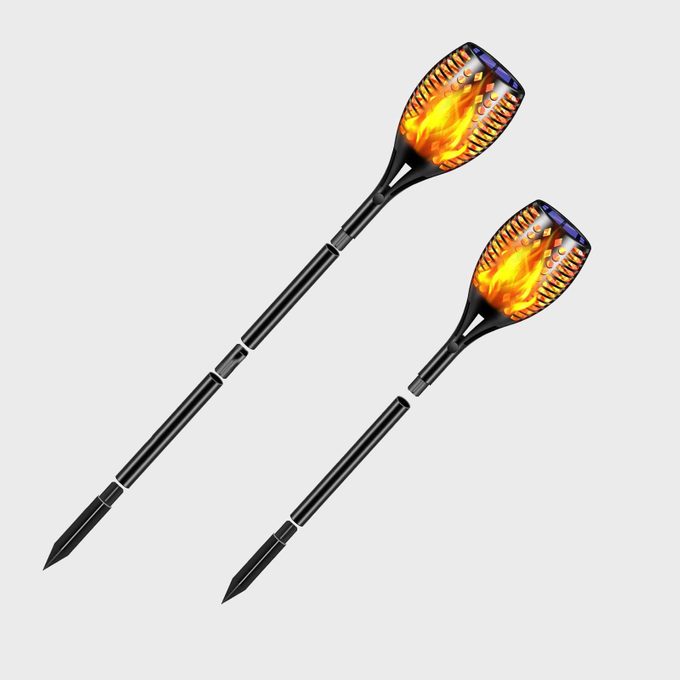
TomCare Solar Lights — the torchlights we have at our California home — come in sets of four and are taller than most path lights. The flickering LEDs light the path and make it easier to spot foraging critters like raccoons and skunks.




















